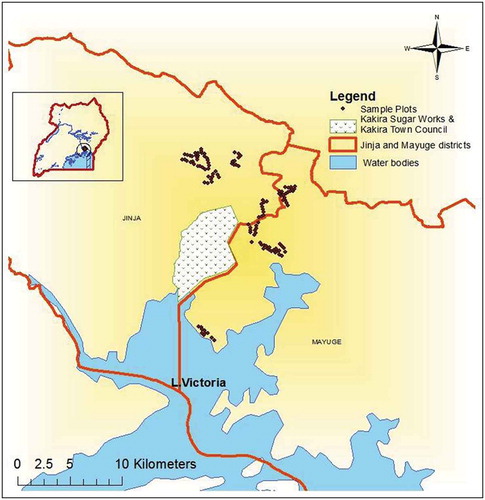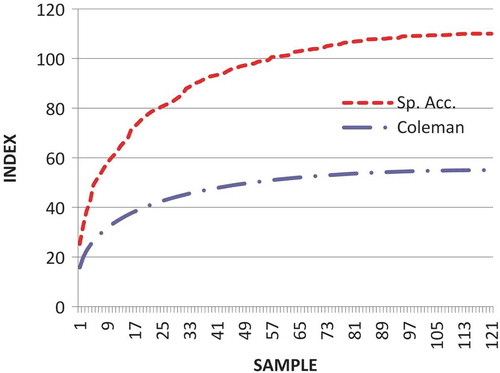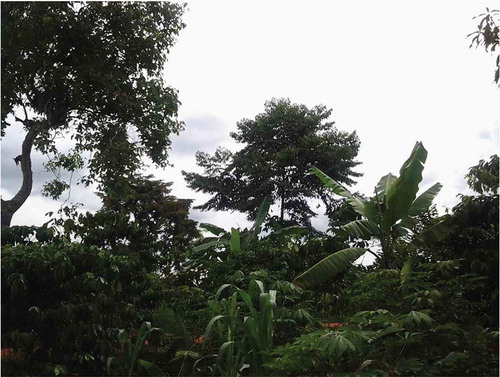Figures & data
Figure 1. Study area showing the 120 sampling sites (·) within a radius of 21 km from Kakira Sugar Works Limited in the commercial sugarcane cultivation villages of Jinja and Mayuge districts, eastern Uganda.

Table 1. A brief description of the diversity indices and measures of similarity applied in the analysis of the plant species data from the 120 homegardens in the sugarcane cultivation villages of Jinja and Mayuge districts, eastern Uganda.
Table 2. List of plant species encountered across all the 120 homegardens in the sugarcane cultivation villages of Jinja and Mayuge districts, eastern Uganda.
Figure 2. Coleman and species accumulation (Sp. Acc.) curves of the floristic composition from the 120 homegardens of the selected 12 villages of Jinja and Mayuge districts, eastern Uganda.

Table 3. A SIMilarity PERcentange (SIMPER) analysis matrix showing the average percentage dissimilarity between villages based on the homegarden agro-diversity data for each studied commercial sugarcane cultivation village in Mayuge and Jinja districts, eastern Uganda.
Figure 3. A homegarden maintained using agroforestry practices in one of the sugarcane cultivation villages of Jinja and Mayuge districts, eastern Uganda. The crops here included cassava (Manihot esculenta), maize (Zea mays L), coffee (Coffea sp.), bananas (Musa spp.) and agroforestry trees (e.g. Maesopsis eminii).

